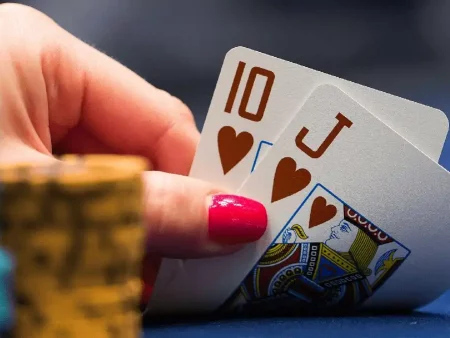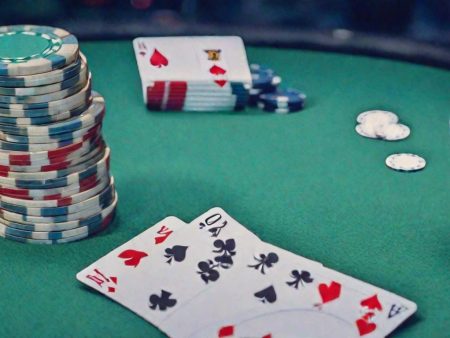Every hand of poker is packed with thrilling moments that players experience as the game unfolds. There are several key stages in poker that are considered standard: Preflop, Flop, Turn, and River. Each stage is marked by betting rounds, and it concludes with the showdown, where players reveal their cards. During the showdown, each player evaluates their hand’s strength, and the cards disclose their secrets.
While not all players reach each stage in every hand, it is essential for all poker enthusiasts to understand the characteristics and risks involved. The game’s rules are particularly valuable for beginners. Sometimes, folding before the flop is a better choice than risking more in the subsequent rounds. The preflop, the initial phase of poker, is crucial. At this point, there are no community cards on the table yet, but players must already assess their hand strength based on their pocket cards.
In games like Texas Hold’em and Omaha, the action begins at preflop. These games, along with many other poker variants, share the feature of community cards dealt on the board. During preflop, players decide whether to continue playing, choose a strategy, or fold and wait for the next hand.
Evaluating Hand Strength:
- Strong Hand: If you have a powerful hand, it’s a great opportunity to raise and put pressure on your opponents. A well-timed raise can eliminate weak hands and build the pot.
- Marginal Hand: With a marginal hand, your goal is to get through preflop with minimal betting. Raising is generally not advisable here. Calling is often a better option, and a favorable flop can improve your hand and help you outlast more players.
- Weak Hand: If you hold a weak hand, continuing the game carries significant risk. Beginners, especially, should consider folding and avoiding further losses in such situations.
The Turn in Poker: Key Strategies
In Texas Hold’em, the late streets are where the true drama unfolds, with huge bets and unpredictable moves. These moments can bring players to the edge of a nervous breakdown as decisions with significant consequences need to be made. Among the late streets, the turn (the fourth community card) stands out. It can dramatically alter the game. At this stage, incomplete hands from the flop may either complete or become irrelevant.
Read also: The concept of ante in poker, its influence on the game strategy.
Turn: A Game-Changing Opportunity or a Risky Gamble? In Texas Hold’em, typically five betting streets are involved, with the turn being the third one, when the fourth community card is revealed. The turn is often where the game takes a dramatic turn, altering players’ hands. A new community card can strengthen or weaken hands, creating new opportunities or exposing weaknesses.
Poker Hand Dynamics
Poker action begins with the placement of blinds (the big and small blinds) and ante bets, typically 10-12% of the big blind. After the blinds are set, players receive their hole cards, and the betting starts on the preflop, the first street. The sequence of play proceeds from the early position (UTG), to middle position (MP), the cutoff (CO), the button (BU), and finally the blinds (SB and BB). After the first three community cards are dealt (the flop), the postflop phase begins.
Postflop: New Rules of Engagement
Postflop is a bit different from preflop, with the player to the left of the button now acting first. The button position remains crucial, providing valuable information about opponents’ actions before it’s your turn. These variables add excitement and unpredictability to the turn, making it a thrilling stage where reading the situation and making the right calls can be pivotal.
Once all bets are made, the turn card is revealed, and betting continues in the same sequence as the flop. The last round of betting happens on the river, where the final community card is dealt, and players can make their last move before the showdown. At this point, players reveal their hands, and the highest hand wins.
The Turn: Evaluating Potential and Calculating Risks
One of the most important skills in poker is calculating outs. This skill comes into play when you have a draw (such as a flush or straight) but need one more card to complete your hand. When you need two cards to complete your hand, it’s known as a backdoor draw (backdoor flush or backdoor straight).
Knowing your outs allows you to make better decisions and avoid unnecessary risks, such as calling without the potential to improve your hand. The turn is often dangerous because players tend to overestimate the likelihood of completing a draw. The chances of hitting your outs are lower on the turn than on the flop, as you only have one card to improve your hand.
Read also: Table and style in poker.
Example of Flush Draw on the Flop
Suppose you have a flush draw on the flop, giving you nine outs for the flush and three outs for a top pair. This gives you about a 47% chance of improving by the river. However, if the flush draw only appears on the turn, you’re left with fewer outs (since only one card remains), reducing your chances to around 25%.
How to Play on the Turn?
To make optimal decisions on the turn, ask yourself the following:
- Does the turn card fit with my hand or my opponent’s potential hand?
- Should I consider bluffing or making a substantial bet?
- What is the best river card to continue my bluff or call?
- Do I still have a chance to call? If so, is my hand already too weak to proceed?
Understanding the situation and narrowing down your opponent’s possible hands can help guide your decisions. While these answers often require experience and strategy knowledge, they can significantly improve your performance at the table. Want to know which casinos actually pay out? Read the top casino and game reviews – honest breakdowns and recommendations!
FAQ: Turns in poker: strategies and features of the game
What is the turn in poker?
The turn in poker is the fourth community card dealt face-up in games like Texas Hold'em and Omaha. It follows the flop (the first three community cards) and is an important moment in the game, as it significantly impacts the potential strength of players' hands. The turn card can change the dynamics of the hand, making it stronger or weaker depending on how it interacts with players' hole cards and the flop.
How does the turn affect my poker strategy?
The turn can either strengthen or weaken your hand, so it is a crucial moment to reassess your strategy. If you’ve made a strong hand on the flop, the turn might help you solidify it or provide new opportunities for drawing. If the turn card does not improve your hand, you may need to adjust your strategy, perhaps by folding or controlling the pot size. It is also a time to analyze the betting patterns of your opponents and decide whether to bet, check, raise, or fold.
When should I bet on the turn in poker?
You should consider betting on the turn when you have a strong hand or a strong draw. If your hand has improved with the turn card (such as completing a straight or a flush), betting allows you to build the pot or force your opponents to make tough decisions. If you're bluffing, the turn is a good opportunity to continue your aggression, especially if it brings in a card that makes your hand look stronger.
What should I do if I miss the turn in poker?
If you miss the turn (meaning the card doesn't improve your hand or your draw), your options depend on the situation. You can choose to check and see the river card for free or with minimal risk. Alternatively, you might decide to fold if the betting becomes too heavy, and you don't believe you have a good chance to win the hand. If you're holding a marginal hand, you might also consider a bluff to apply pressure on your opponents.
How does the turn affect the pot odds in poker?
The turn can significantly impact the pot odds, as the size of the pot increases with additional betting. The turn card can also influence whether you’re getting the correct odds to call a bet. If your odds of completing your draw on the river improve with the turn, you might choose to call. However, if the odds are not favorable, folding might be the better option to avoid losing more chips.
Should I slow play on the turn in poker?
Slowing down the action on the turn is a strategy that can be effective when you have a strong hand but want to trap your opponents into betting more. For example, if you’ve hit a strong hand like a full house or flush, checking or calling instead of betting aggressively can encourage your opponents to bet, allowing you to extract more value later. However, be careful, as this strategy can backfire if your opponents catch on and check behind you, missing out on potential bets.
What are the risks of overvaluing the turn in poker?
Overvaluing the turn is a risk when you get overly excited about a seemingly strong hand after the turn card is dealt. It's important to always evaluate your hand in context. Just because the turn improved your hand doesn't mean you're guaranteed to win. If you're facing large bets from opponents who could also have strong hands, it’s crucial to assess the situation carefully before committing more chips.






